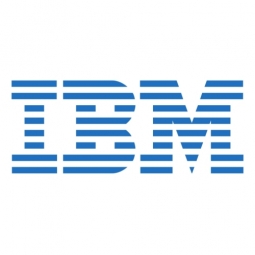Technology Category
- Cybersecurity & Privacy - Identity & Authentication Management
- Robots - Wheeled Robots
Applicable Industries
- E-Commerce
- Retail
Applicable Functions
- Sales & Marketing
Use Cases
- Retail Store Automation
- Traffic Monitoring
About The Customer
American Eagle Outfitters, Inc. (AEO) is a leading global specialty retailer offering high-quality clothing, accessories, and personal care products for teens. AEO operates more than 1,000 stores in North America and ships to 77 countries worldwide through its ae.com e-commerce website. To maintain its competitive advantage in the competitive fashion retail industry, AEO relies on IBM Tealeaf customer experience management (CEM) solutions to ensure a seamless retail journey across all online channels.
The Challenge
American Eagle Outfitters (AEO), a leading global specialty retailer, was facing challenges in delivering high-quality shopping experiences across all its digital channels. The company relied on limited information from customer feedback forms to understand digital customer experiences. This approach resulted in incomplete information, making it difficult to replicate the exact circumstances that prevented customers from successfully completing their purchases. Consequently, it was challenging to identify 'sticking points' on the online and mobile journey that frustrated customers. The company was also struggling with low conversion rates due to issues such as a corrupted shopping cart and incorrect discount codes. Additionally, AEO was facing difficulties in understanding customer interactions on the mobile channel due to the complexity of multiple mobile devices, browsers, and screen sizes.
The Solution
To address these challenges, AEO implemented IBM Tealeaf customer experience management (CEM) solutions. This enriched its existing voice-of-customer solution with insight into real-world customer behavior, enabling proactive experience improvements to the digital channels. The team could replay sessions that resulted in negative customer feedback step-by-step and truly understand the obstacles that customers described. With IBM Tealeaf CEM solutions in place, AEO could rapidly identify website issues and be proactive in its site optimization efforts across the online and mobile channels. The company was able to reconcile cryptic customer feedback with what actually happened in each digital journey. AEO also detected and corrected a mobile compatibility issue on its review pages, redesigned its review page for touch-based devices, and improved the account login and password reset process.
Operational Impact
Quantitative Benefit

Case Study missing?
Start adding your own!
Register with your work email and create a new case study profile for your business.
Related Case Studies.

Case Study
Improving Production Line Efficiency with Ethernet Micro RTU Controller
Moxa was asked to provide a connectivity solution for one of the world's leading cosmetics companies. This multinational corporation, with retail presence in 130 countries, 23 global braches, and over 66,000 employees, sought to improve the efficiency of their production process by migrating from manual monitoring to an automatic productivity monitoring system. The production line was being monitored by ABB Real-TPI, a factory information system that offers data collection and analysis to improve plant efficiency. Due to software limitations, the customer needed an OPC server and a corresponding I/O solution to collect data from additional sensor devices for the Real-TPI system. The goal is to enable the factory information system to more thoroughly collect data from every corner of the production line. This will improve its ability to measure Overall Equipment Effectiveness (OEE) and translate into increased production efficiencies. System Requirements • Instant status updates while still consuming minimal bandwidth to relieve strain on limited factory networks • Interoperable with ABB Real-TPI • Small form factor appropriate for deployment where space is scarce • Remote software management and configuration to simplify operations

Case Study
Digital Retail Security Solutions
Sennco wanted to help its retail customers increase sales and profits by developing an innovative alarm system as opposed to conventional connected alarms that are permanently tethered to display products. These traditional security systems were cumbersome and intrusive to the customer shopping experience. Additionally, they provided no useful data or analytics.

Case Study
How Sirqul’s IoT Platform is Crafting Carrefour’s New In-Store Experiences
Carrefour Taiwan’s goal is to be completely digital by end of 2018. Out-dated manual methods for analysis and assumptions limited Carrefour’s ability to change the customer experience and were void of real-time decision-making capabilities. Rather than relying solely on sales data, assumptions, and disparate systems, Carrefour Taiwan’s CEO led an initiative to find a connected IoT solution that could give the team the ability to make real-time changes and more informed decisions. Prior to implementing, Carrefour struggled to address their conversion rates and did not have the proper insights into the customer decision-making process nor how to make an immediate impact without losing customer confidence.

Case Study
Ensures Cold Milk in Your Supermarket
As of 2014, AK-Centralen has over 1,500 Danish supermarkets equipped, and utilizes 16 operators, and is open 24 hours a day, 365 days a year. AK-Centralen needed the ability to monitor the cooling alarms from around the country, 24 hours a day, 365 days a year. Each and every time the door to a milk cooler or a freezer does not close properly, an alarm goes off on a computer screen in a control building in southwestern Odense. This type of alarm will go off approximately 140,000 times per year, equating to roughly 400 alarms in a 24-hour period. Should an alarm go off, then there is only a limited amount of time to act before dairy products or frozen pizza must be disposed of, and this type of waste can quickly start to cost a supermarket a great deal of money.

Case Study
Supermarket Energy Savings
The client had previously deployed a one-meter-per-store monitoring program. Given the manner in which energy consumption changes with external temperature, hour of the day, day of week and month of year, a single meter solution lacked the ability to detect the difference between a true problem and a changing store environment. Most importantly, a single meter solution could never identify root cause of energy consumption changes. This approach never reduced the number of truck-rolls or man-hours required to find and resolve issues.








